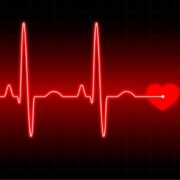Importance of Knowing your Blood Oxygen Level
While most people are concerned over vital signs including their pulse, temperature, blood pressure and respiratory rate, a little less understood science when measuring fitness levels of an individual is the idea of measuring one’s blood oxygen level, SPo2. Oxygen saturation is presented in the form of a percentage that refers to the fraction of oxygen-saturated hemoglobin that is relative to the total hemoglobin, unsaturated and saturated, in the blood. In simpler terms, it is the level of oxygen available in the blood. If the individual is in good health, normal blood oxygen levels almost always fall within a very predictable range of between 95% to 100%. This means that the body is getting sufficient oxygen to be able to perform the necessary basic functions and that the internal organs are performing at their best. Not only that, blood oxygen levels in the body also has an effect on how effective workout sessions are.
The usual procedure of measuring oxygen saturation, to measure the blood that is still carrying or is saturated with oxygen, is with the use of a pulse oximeter http://www.torontek.com. Pulse oximetry is considered to be a non-invasive and painless method of getting a general idea of oxygen delivery to peripheral tissues, like the finger, earlobe and nose, where a clip-like device called a probe, is placed on those body parts. However, it is necessary at times to analyze blood taken directly from the artery, more commonly known as arterial blood oxygen. A normal arterial blood oxygen level usually falls between 75 and 100 mmHg. Blood carbon dioxide level and pH, the measure of acidity or alkalinity, can also be measured with the arterial blood oxygen level.
“Pulse oximetry is a way to measure how much oxygen your blood is carrying. By using a small device called a pulse oximeter, your blood oxygen level can be checked without needing to be stuck with a needle. The blood oxygen level measured with an Oximeter is called your oxygen saturation level.”
Regularly checking of your SPo2 levels can help you keep track of how the body is performing over time, and can provide early warning signs to potential problems that your body may potentially be facing.
How does a pulse oximeter work?
A pulse oximeter comes either as a small unit with a built in finger/toe clip, or a small hand held device that has a wire probe that can attach or be applied to your finger, toe or earlobe. The small unit is less expensive and more practical for home use. Beams of light from the device pass through the Pulse oximetry is a way to measure how much oxygen your blood is carrying. By using a small device called a pulse oximeter, your blood oxygen level can be checked without needing to be stuck with a needle. The blood oxygen level measured with an oximeter is called your oxygen saturation level (abbreviated O2sat or SaO2). This is a percentage of how much oxygen your blood is carrying compared to the maximum it is capable of carrying. Normally, more than 89% of your red blood should be carrying oxygen. blood in your finger (earlobe or toe) to measure your oxygen. You will not feel this happen. The beams of light are “read” to calculate the percentage of your blood that is carrying oxygen. It also provides a reading of your heart rate (pulse). To make sure the oximeter is giving you a good reading, count your pulse for one minute and compare the number you get to the pulse number on the oximeter. If they are the same, you are getting a good signal.
Should I get a pulse oximeter?
Most people do not need a pulse oximeter. Some people are prescribed a pulse oximeter if they have or could have periods of low oxygen; for example, when you are exercising or if you travel to high altitude. Having a pulse oximeter in these cases will allow you to monitor your blood oxygen level and know when you need to increase your supplemental oxygen flow rate. Ask your health care provider what oxygen saturation number(s) they want you to maintain. Pulse oximeters are available online http://www.torontek.com or by prescription from your local pharmacy or medical supply company.



